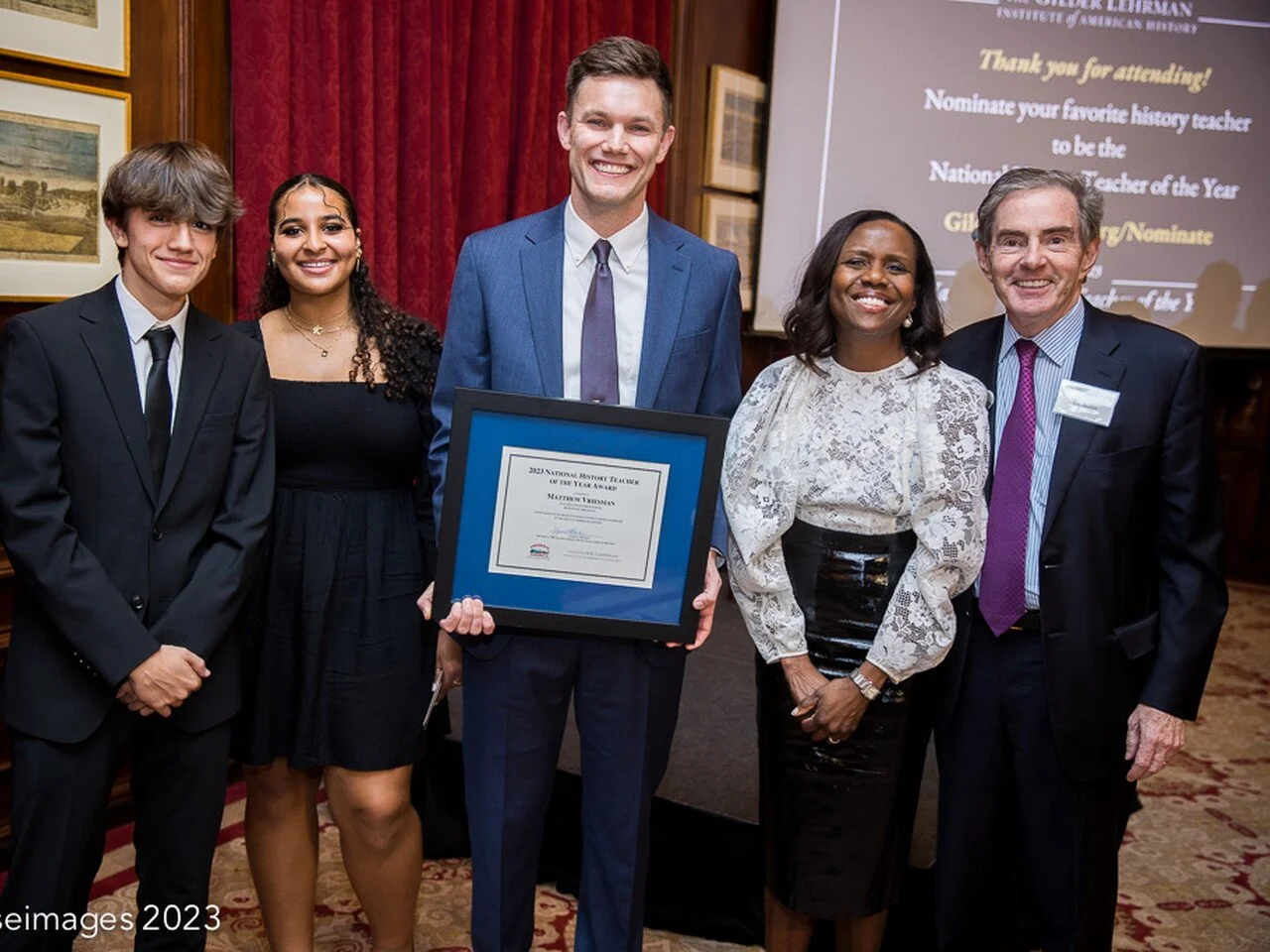It was a great honor to be presented with the Gilder Lehrman National History Teaching of the Year award in New York City this past week. I hope that this award serves to validate and normalize an antiracist approach to U.S. history class.
Award reception in New York, along with Dr. James Basker, President of the Gilder Lehrman Institute, Deborah Roberts of ABC, and members of the Gilder Lehrman Student Advisory Council.
We must stare into the past without flinching. We must recognize the power of the tools that this country's founding values provide; while also acknowledging the ways we have failed to live up to them. Our job is to support our students as they discover and strengthen their voices and prepare them to show up to all the places where decisions are made. When they engage, informed, and empowered, our country will be better for it.
An antiracist history class empowers students by disrupting assumptions about what is possible. The approach should no longer be seen as controversial. It is supported by historians and leaders in history education because it is based on the biological and historical fact that while race is not real, racism has polluted the development of every major institution in American life. That America's beautiful founding ideals were shackled to belief in racial mythology, is, as Dr. Barbara Fields puts it, “America’s tragic flaw”.
Students come into US history class, already with a lot of knowledge and experience about our current society. They see whose culture, whose values, whose beauty standards, whose liberty, and whose lives seem to matter most. If we imply that all of this is a natural outcome of market forces in a perfectly free society, we insult them. We insult their families, their cultures, and their humanity. And when we lie to them, they know it. So they protect themselves, and naturally, walls go up.
However, when we empower students to become historical investigators, by broadening access to a wider pool of primary sources, we have a chance for a much greater outcome.
I was honored to work with curators at the Grand Rapids Public Museum to create a series of lessons about Jim Crow in our own midwestern city. Local history is that much more relevant and powerful. I wish everyone could experience the power of a true a-ha moment in an antiracist US history class. Yes, there's anger, that's healthy processing, but there's relief and validation with the understanding that things didn’t have to be this way. When a student discovers the proof that it's not their neighborhood's fault, it's not for lack of creativity or passion, hard work or brilliance that their neighborhood lacks the resources of the neighborhood across the highway, or even across the street. This was planned. And the people of their neighborhood were not asked to be a part of that planning.
This leads to the necessary question, What if? What if voters in our city had actually dedicated themselves to the 14th Amendment as they had promised? What could our city and our nation have looked like today? Through this activity, we can begin to imagine the possibilities of what we want the future of our communities to look like. History class is the place where we can empower students by inviting them to participate in Langston Hugh’s powerful and determined vision:
O, let America be America again—
The land that never has been yet—
And yet must be—the land where every man is free.

